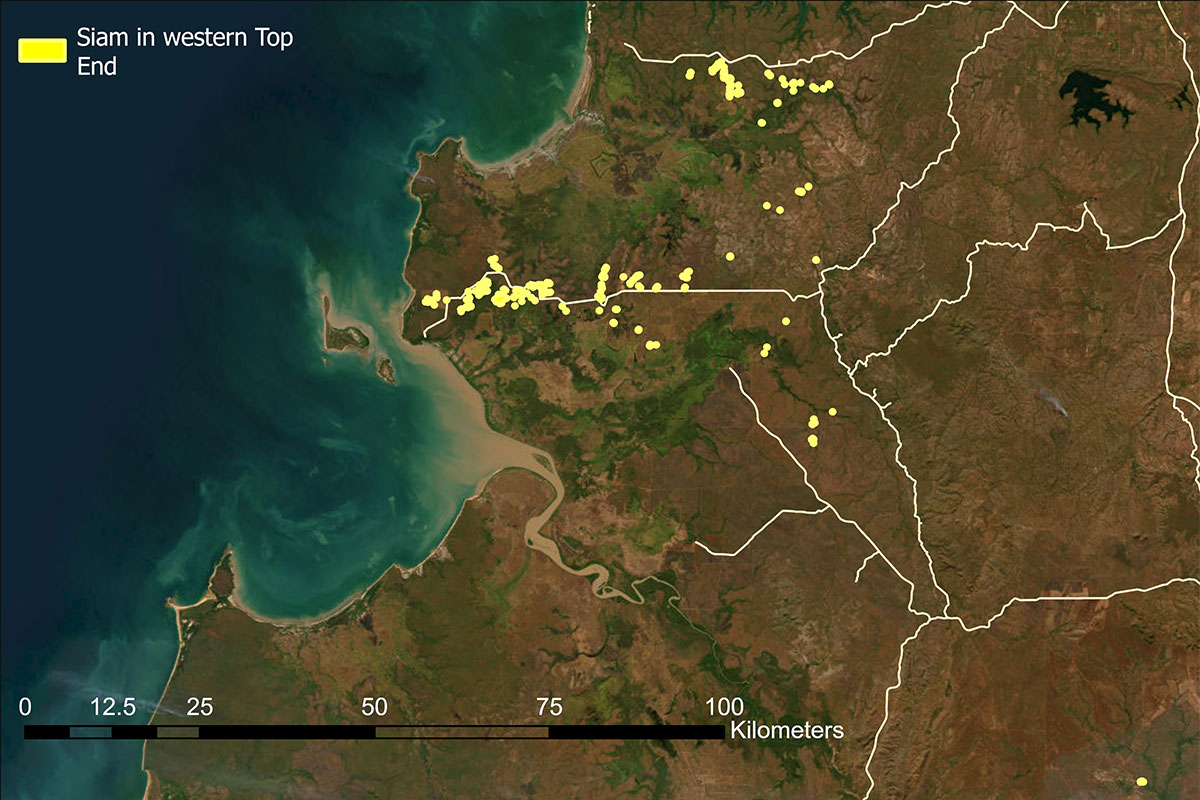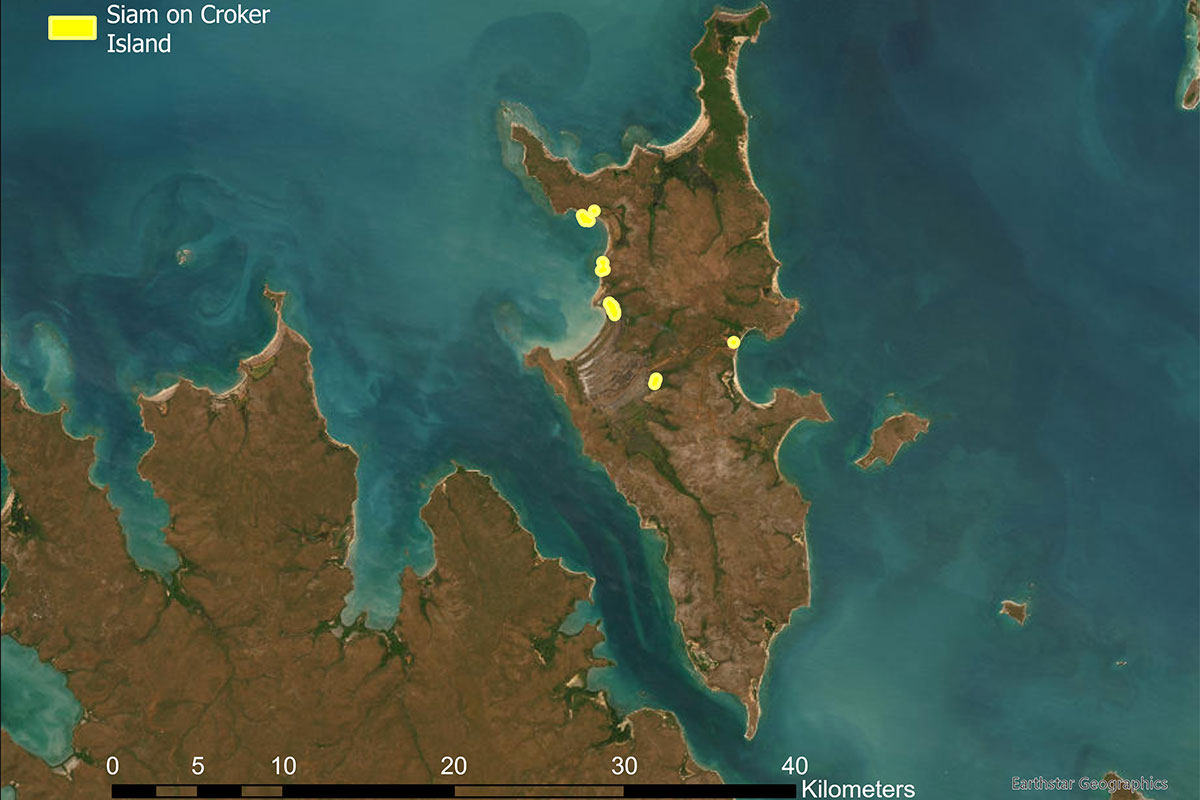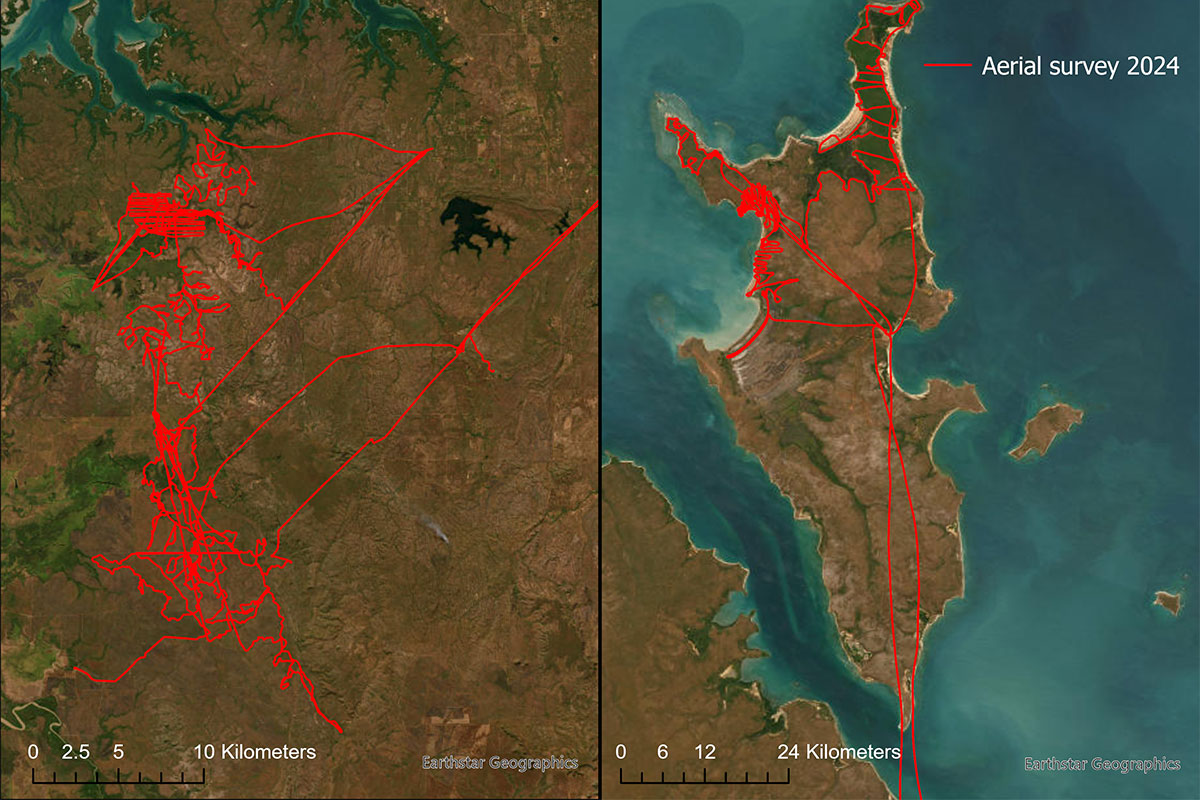Siam Weed Update October 2024
As of October 2024, Siam weed (Chromolaena odorata) is known to be present at over 150 sites across 15 properties in the Northern Territory.
In the western Top End these infestations span three major river catchments; the Finniss, Reynolds and to a lesser extent the Daly.

The major development this year was the detection of Siam weed on the north-western part of Croker Island, more than 200km to the north-east of Darwin. Croker Island has a high level of movement with the surrounding Islands such as the Goulburn islands and Oenpelli in north-west Arnhem Land. Croker Island is also in close proximity to the Ramsar-listed Garig Gunuk Barlu National Park on the Cobourg Peninsula, with some sites being located within just 10km of the park boundary.
Most of the on-ground containment efforts have been informed by the aerial survey program, which occurs in June and July, when Siam is in flower. This year aerial survey was conducted across targeted areas in the Finniss and Reynolds catchments west of Litchfield National Park. New detections were limited with most of the new sites being on the Finniss to the east of Hardcastle Road. Some aerial survey was completed over Croker Island but more extensive surveys will be required over Croker and surrounding areas given the size of the infestation found during survey.

There has been no major range extension across the western Top End; however, there has been an increase within the core infestation areas. Since the last update, Siam weed has been detected on three new properties adjacent to the Finniss River in Bynoe, south of Fog Bay Road. These new sites are all considered eradicable and have already undergone several rounds of treatment.
Two of these new detections in Bynoe were the result of a report from an observant landholder. The spread of Siam weed in Bynoe, where there is a more urban interface is concerning. Increased activity and traffic create more opportunities for Siam weed seeds to spread, making public reports crucial for future containment efforts.
Siam weed is now present on 6 private properties, 7 pastoral properties and three Aboriginal land trusts.
Earlier in the year the Northern Land Council (NLC), with support from the Weed Management Branch (WMB), applied for and were in successful in securing a grant through the North Australian Indigenous Land and Sea Management Alliance (NAILSMA) to fund aerial survey of Aboriginal land across the Daly river catchment. These surveys will take place in June/July 2025.

The Siam bio-control program has been steadily progressed, with approximately 1000 Cecidochares connexa gall flies released over the past year on core properties. These flies are completely reliant on Siam weed for their lifecycle. The adult flies lay their eggs inside the plants stems, causing the formation of galls as the larvae develop. This process weakens the weed by reducing its ability to flower and produce seeds. Once the larvae mature, the adult flies emerge from the galls, seek mates, and begin the cycle again, which takes about two months.
While the bio-control has proven effective in reducing Siam populations in other regions like Queensland, its impact in the Top End is still limited. Although the flies are established at several sites, their numbers haven’t yet reached a level where they can significantly suppress Siam infestations.
Since 2022 the funding for the Containment of Siam Weed in the Northern Territory project has been provided by the Australian Government through its Established Pest Animals and Weeds Program. This project is now in its final year and will end in July 2025. The Weed Management Branch will continue to look for ways to continue this project after this date.
The WMB recently nominated Siam weed to be listed as a Weed of National Significance, a successful nomination would mean Siam weed would be prioritised for nationally coordinated management, with the potential for a species-specific national co-ordinator. Given that the main core of Siam weed in Australia is in Queensland, and the Northern Territory infestation is considered an outlier infestation, it is likely that national coordination would prioritise the Northern Territory outbreak when it comes to management programs.
Ongoing control of Siam weed will be reliant on landholders with support from the Weed Management Branch. The Siam Weed Project Officer will be working with affected land managers to develop individual weed management plans for infested properties. Additionally, a Siam Weed Management Guide has been developed which aims to provide strategic management advice on controlling Siam weed across the wet/dry tropics of northern Australia. Paper copies will be available from the Weed Management Branch.
Visit the Northern Territory Government website to learn more and download the Siam weed management guide.
Contact
Josh Maeer – Siam Project Officer
0427 608 057 Joshua.maeer@nt.gov.au

